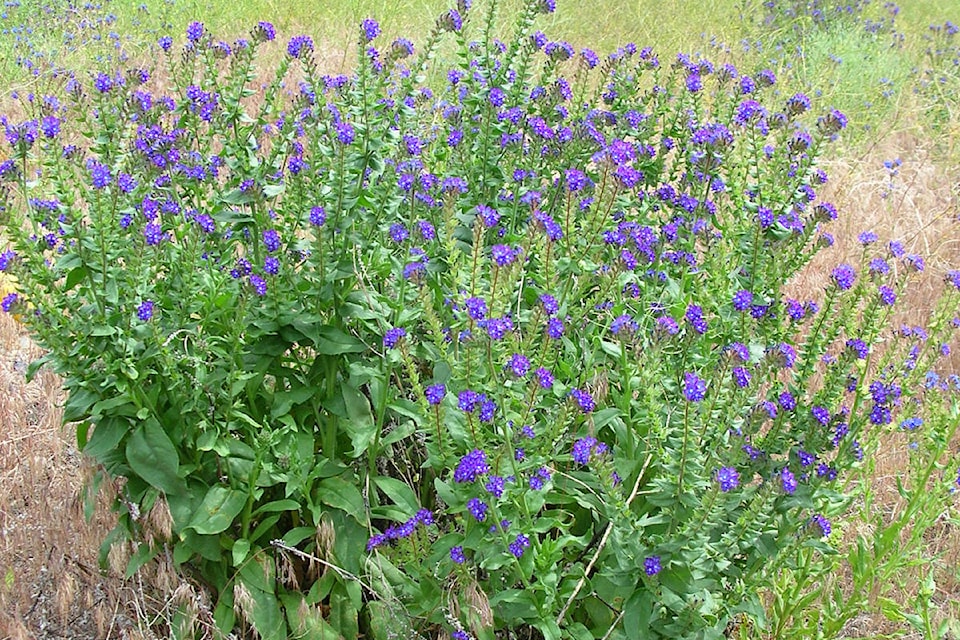A presentation held by the Okanagan and Similkameen Invasive Species Society (OASISS) on invasive plant species in the South Okanagan in Keremeos last week is encouraging residents to be part of the solution.
“Not everyone realizes they should check their boots when they go walking or clean their dog off,” said Lisa Scott, OASISS executive director.
She added homeowners often inadvertently import new invasive plants to their property, perhaps even by bringing home a pretty new plant from the garden store.
READ MORE: Okanagan Basin Water Board continues call to protect B.C. waters from invasive mussels
“It’s just getting people to think a little more about invasive species that are already in our region and what they can do to help them prevent the spread of them,” Scott said.
An important way to prevent the spread of invasive plant species is not buying them in stores. Scott said it is common for garden stores to sell plants that would be considered invasive to a region.
There are limited restrictions.
The B.C. Weed Control Act, which outlines which plants can be sold in the province is “quite archaic legislation,” she said.
“In the horticultural sector there is always this desire for new garden plants and new species. There are invasive species and they are on the shelves. It’s very much buyer beware.”
For example, Scott said Russian Olive, an invasive species to the South Okanagan and Similkameen, is still being sold.
“It’s a very invasive tree. I definitely see them around the Okanagan and the Similkameen.
“They are a tree that grows in very low nutrient soil. It grows quickly.
“It is an attractive sage colour but it has characteristics that make it very invasive particularly along creeks and waterways.
“It doesn’t have natural enemies and it will out-compete our native species and the birds will feed on the seeds and transport the seeds so that perpetuates the problem.”
Invasive plants tend to be rapid growers, prolific seed producers and highly effective seed dispersers, she said. And once infested, many sites can never be restored.
READ MORE: RCMP conducting boat pre-checks on Okanagan Lake
Knotweed is another invasive plant Scott has seen around Keremeos.
“It’s called false bamboo. People think it is bamboo and it gets sold under that name,” she explained. “It’s a huge problem in the Lower Mainland and Fraser Valley.”
While knotweed can’t be sold at a retail outlet, Scott said it is shared by gardeners.
“It’s either traded at farmers markets or amongst gardening enthusiasts. Unfortunately, it’s an incredibly invasive plant and it grows along our creeks and waterways and out-competes the native plants.
“Also, it doesn’t bind the soil in the same way so it destabilizes our creek banks and results in erosion so now you are having impacts to fish in the water because you get sedimentation.”
To report a typo, email: editor@keremeosreview.com.
<>@KeremeosReview
editor@keremeosreview.com
Like us on Facebook and follow us on Twitter.
